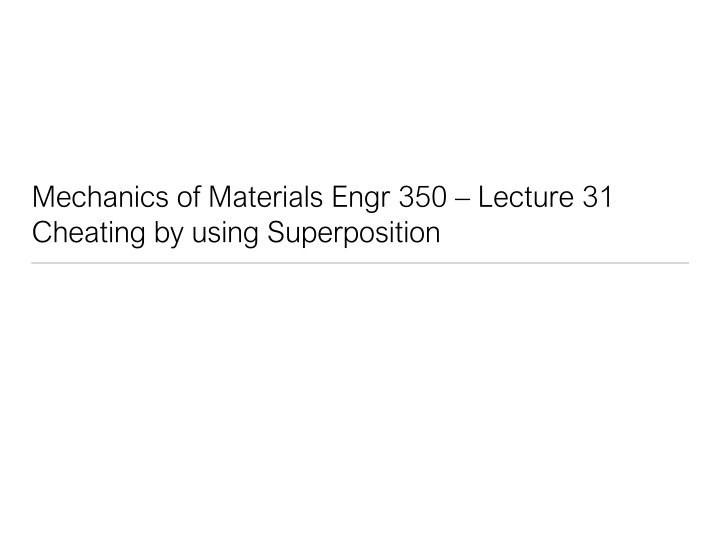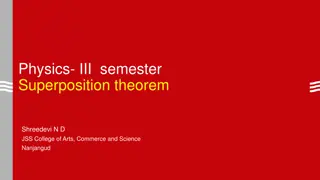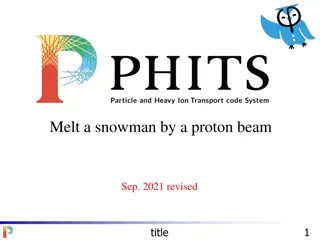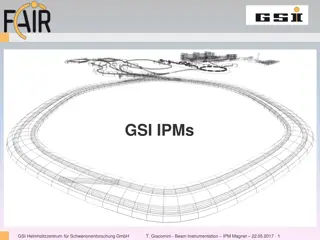
Superposition Principle in Mechanics of Materials
Explore the Superposition Principle in Mechanics of Materials, a technique to solve complex problems by breaking them into simpler ones. Learn how to apply this principle to analyze beam deflection and loading scenarios with examples provided.
Download Presentation

Please find below an Image/Link to download the presentation.
The content on the website is provided AS IS for your information and personal use only. It may not be sold, licensed, or shared on other websites without obtaining consent from the author. If you encounter any issues during the download, it is possible that the publisher has removed the file from their server.
You are allowed to download the files provided on this website for personal or commercial use, subject to the condition that they are used lawfully. All files are the property of their respective owners.
The content on the website is provided AS IS for your information and personal use only. It may not be sold, licensed, or shared on other websites without obtaining consent from the author.
E N D
Presentation Transcript
Mechanics of Materials Engr 350 Lecture 31 Cheating by using Superposition
Superposition The Principle of Superposition allows you to break hard problems up in to multiple easy problems, then add up all the answers System must be linear (most mechanics systems are, as are DC electric circuits) Deflection must have a linear relationship with the loading. Hooke s Law must apply to the material. Loading must not significantly change the original geometry of the beam. Boundary conditions resulting from the sum of individual cases must be the same as in the original beam configuration. Boundary conditions used should be slope or deflection values. 2
For the beam and loading shown, use the double- integration method to determine Example problem 1 (a) the equation of the elastic curve for the beam. (b) the maximum deflection. (c) the slope at A. Assume that EI is constant for the beam. 5





















